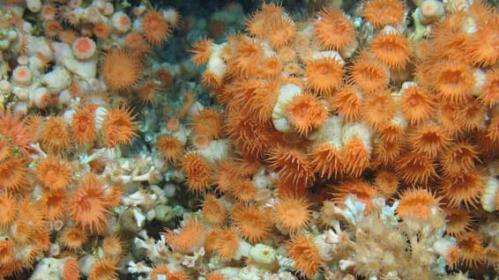Study to use Google data search analytics to understand marine networks

Scientists at Heriot-Watt University will use the kind of computing algorithms more commonly associated with Google search engines to uncover and record the complex relationships which exist across Scotland's Marine Protected Areas.
'Graph theory' as it is known, underpins many computerised applications. It is used, for example, in internet and telephone network design, optimising emergency service response times, Facebook degrees of separation and Google ranking techniques.
Graph theory algorithm-based approach
A new study by the University will use computer models to map ocean currents and larvae movement around Scotland's coast after which the graph theory algorithm-based approach will be used to analyse the data. It is hoped it will reveal how individual protected areas connect and how important that connectivity is to marine species such as protected cold-water corals and other reef-forming species such as flame shells, horse mussels and serpulid worms.
Ecosystems cannot exist in isolation. Many marine creatures, as adults, live fixed to the sea bed, but these sedentary populations are linked through the production of larvae which drift on the ocean currents, like seeds on the wind, before settling, allowing colonisation of new areas and recovery of damaged populations.
Dr Alan Fox who has recently joined the School of Life Sciences on a Daphne Jackson Fellowship, will work with Professor Murray Roberts and Professor David Corne, to study this connectivity.
"Application of graph theory to marine conservation networks will help identify important sites and pathways, find gaps and optimise the network for marine protection," said Dr Fox. "Longer term, combined with monitoring, network characteristics will help determine the essential properties of successful marine protection and feed in to protected area network design worldwide."
Professor David Corne, Director of Enterprise, Impact and Innovation in Heriot-Watt University's School of Mathematical & Computer Sciences said, "Viewing the MPA network through a 'complexity science' lens enables us to discover significant problems or opportunities that would otherwise be missed; Alan's work could lead to an entirely new approach to identify MPAs, providing stakeholders with more confidence in their ability to ensure the protection of vulnerable species."
In July the Scottish Government designated 30 new MPAs in Scotland's seas to help protect marine species and habitats, from sponges on the deep seabed to dolphins and basking sharks. These MPAs join existing protected areas around the coast forming a developing network where damaging activities will be managed to allow marine life to thrive. To obtain maximum benefit scientists need to know how well the protected areas will function as a complete network.
The Sir Charles Lyell Centre for Earth and Marine Science Technology
Professor Murray Roberts, co-ordinator of Heriot-Watt University's new Lyell Centre for Earth and Marine Science and Technology said, "Marine ecosystems have never been under as much stress as they are now. We are seeing the effects of warmer temperatures and ocean acidification changing the oceans at unbelievably rapid rates. There's real concern that additional pressures from things like over-fishing and pollution may push marine ecosystems too far – and that's why properly integrated networks of marine protected areas are more important now than ever before.
"It's these protected places that hold the best hope for ecosystems to recover and help provide the larvae and juveniles that will spread to other areas."
Provided by Heriot-Watt University




















